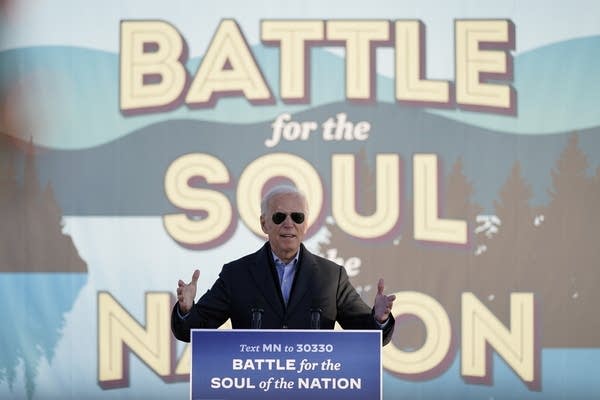Biden wins Minnesota; GOP retains state Senate control

Democratic presidential candidate former Vice President Joe Biden speaks at a rally at the Minnesota State Fairgrounds in Saint Paul, Minn., Friday, Oct. 30, 2020.
Andrew Harnik | AP
Go Deeper.
Create an account or log in to save stories.
Like this?
Thanks for liking this story! We have added it to a list of your favorite stories.


